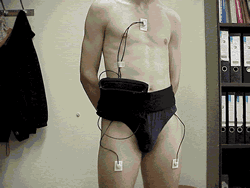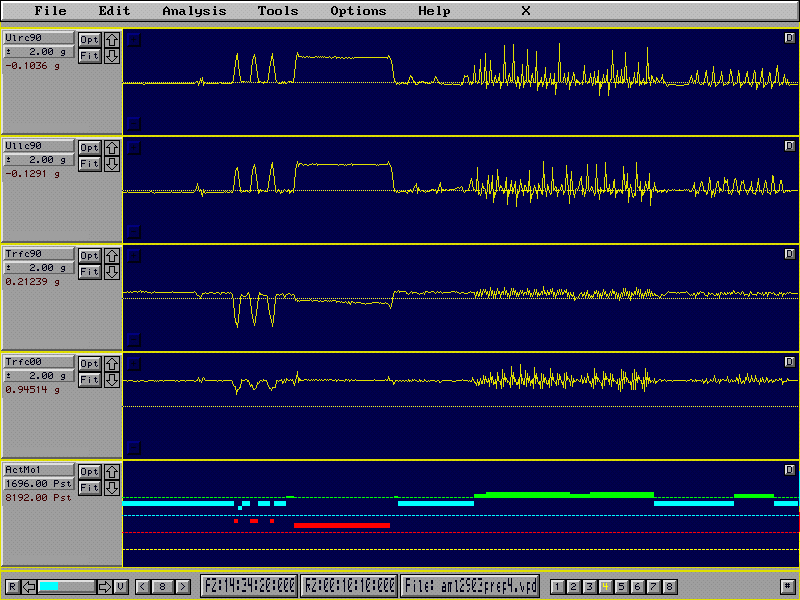
Accelerometry-based activity monitoring: objective measurement of postures and motions
J.B.J. Bussmann1, F.C. Schasfoort1, J.H.M. Tulen2 , H.J.G. van den Berg1 and H.J. Stam1
1Department of Rehabilitation Medicine, University Hospital Rotterdam, Dijkzigt and Erasmus University Rotterdam, Rotterdam, The Netherlands 2Department of Psychiatry University Hospital Rotterdam, Dijkzigt and Erasmus,University Rotterdam, Rotterdam, The Netherlands
In 1992 the research line 'Ambulatory monitoring of mobility-related activities' started at the department of Rehabilitation [6]. This research line is aimed at the development, validation and application of an 'Activity Monitor' (AM). The AM is a portable instrument, based on ambulatory accelerometry and aimed at long-term (several days) measurement of the quantity, quality and physical strain of postures and motions (e.g. standing, sitting, lying, walking, cycling etc.) during normal daily life. The AM consists of four body-mounted uni-axial piezo-resistive accelerometers, a portable data recorder and analysis software.

Figure 1. Activity Monitor configuration
The first phase was especially aimed at the quantity aspect (i.e. posture/motion detection: which posture/motion is performed when, how often and for how long), and was characterised by initial development of activity detection (theoretical background [5], requirements to the instrument, technical issues [6]). Then a phase of validation started: the reliability/validity of the AM was examined in several populations (able-bodied persons, amputees, back pain patients, heart failure patients), using analysed videotape recordings as reference [1, 2, 3]. High agreement scores showed that the AM was a valid instrument to measure postures/motions. Recently, the possibilities of the AM were extended for research aimed at ambulatory measurement of arm-hand use. Other studies have shown that the AM is also sufficiently sensitive for measuring differences in daily functioning between groups (heart failure patients and patients with meningomyelocele versus healthy controls, and differences due to benzodiazepines [7]. Currently, the AM is used in three randomised clinical trials on treatment effects in heart failure, post-polio and migraine patients [8].

Figure 2. Four measured acceleration signals and the automatic (1-second resolution) activity detection (red; sitting; blue; standing; green; walking).
Quality of postures/motions is related to 'how activities are performed', movement pattern and movement co-ordination, especially in walking and the sit-to-stand transition. Gait quality in the elderly - using the acceleration signals of the AM as input - was studied, as well as walking of amputees. Currently a project is performed about the evaluative and prognostic value of ambulatory accelerometry during the sit-to-stand transition in stroke patients.
Physical strain during daily life is another concept to be measured with the AM. Physical strain can be determined by heart rate and motility, a derivative of the acceleration signals. Research performed so far was aimed at optimisation of the way of measurement of physical strain. Studies included the relationships between heart rate, motility and oxygen uptake in healthy subjects [4] and amputees during walking. Currently, measurements are performed to study these relationships during other activities than walking. Ambulatory monitoring of postures and motions appears to be a promising technique for prognosis and therapy evaluation. Not only for applied and clinical research in rehabilitation medicine and psychiatry, but also for other disciplines such as physiotherapy, behavioural sciences, psychophysiology and ergonomics.
Paper presented at Measuring Behavior 2000, 3rd International Conference on Methods and Techniques in Behavioral Research, 15-18 August 2000, Nijmegen, The Netherlands